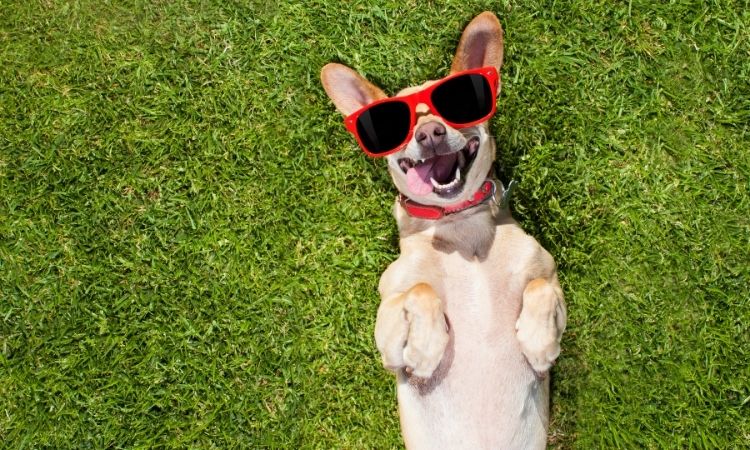Deciding to welcome a new puppy as the latest addition to the family should not be taken lightly. Prospective owners need to consider many factors that involve the responsibility of ownership towards the new puppy. Having one or two new puppies can brighten up the entire household, so the more care you give your puppy, the more love they will give back.
New dog owners are often anxious and panic, especially if their new puppy seems to be ‘abnormal’. After all, you hardly see dogs misbehaving on television, so people often ask themselves what’s wrong when they see their puppies acting in ‘irregular’ ways.
There are also plenty of articles online that seem to contradict each other regarding how puppies may act in different stages of their lives. After you read the list below about popular dog myths will put your mind to ease. You should spend more time loving your new puppy than being scared of whether they are ‘normal’ or not.
Dogs Are Color Blind
Contrary to popular belief, dogs are not color blind. It is just that they are less sensitive in detecting colors as compared to humans. This is because dogs have retinas that contain far fewer cone cells that are responsible for detecting color.
The other reason is that man’s best friend is dichromatic. They only see two colors primarily, blue and yellow. Humans are trichromatic, where we detect red in addition to blue and yellow.

Dog Aging Process, 1 Dog Year = 7 Human Years
It is a fact that dogs mature much faster than humans, but the rate of aging noticeably slows down after the dog’s first few years. The life span of a dog depends entirely on its breed, size, and lineage.
Therefore, while it may be convincing to believe that dogs mature seven times faster than us, it is, in fact, a myth. Your dog still has a long life ahead of it, and you can foresee the both of you enjoying a happy life together for a long time to come.
Before Buying A Dog, You Must First Have A Yard
The myth here is that dogs constantly need a wide space to run around and exercise; otherwise, they would feel cramped and slip into depression. This would make it impossible for apartment dwellers ever to own a dog.
The fact is that dogs prefer to be in packs, so no matter how much space you have in your house, you will often find the dog close by your feet. If you leave it to play in the yard, it will still choose to linger near the door, waiting for you to open it so that it can be reunited with you.
Friendliness In The Wag
The wagging of the tail, that is. Not all tail wagging symbolizes friendliness. There are three positions for a wag. The first is the tail between the legs, in the middle and high on top (almost to a 90-degree angle). When the dog’s tail is slightly wagging at an upright position, this symbolizes a dominant position. Avoid touching the dog in this situation.
If the tail is shallow between the legs, the dog feels fearful and defensive and is prone to bite. So it is important to understand the signals before extending your hand for a pat. You may find yourself in the dog’s jaws instead of its furry body.
Dogs Eat Grass When They Are Ill
This behavior is believed to come from the dogs’ genetic heritage to the wolves. When wolves hunt and kill their prey, they often consume every part of the carcass, including ingesting the stomach contents of the prey. Consuming small amounts of grass is considered normal behavior.

Rub Your Dog’s Nose Into Their Accident To Teach It A Lesson
Dogs do not learn from mistakes as humans do. Once the accident has been done, they will not associate the mess on the floor. Not even if you decide to push its nose into the mess, it just made. The proper way to act would be to maintain a neutral facial expression and calmly clean up the mess.
Associating sudden violent behavior will terrify the dog, and it may soon decide to find a secret place to poop instead of doing it in front of you. Leaving you to discover the mess on your own.
My Dog Certainly Knows She Made A Mistake – Her Guilty Face Says So
This is a miscommunication of signals to the highest degree. We perceive their slightly sad faces as expressions of guilt. This is, in fact, not true, as when we are angry, we portray ourselves as scary creatures. The dog only perceives our facial expressions as dominant, scary, and the use of loud noises (shouting).
The expression is far from guilt. They are only showing their appeasement to your behavior. Hence, the guilty look is simply a reaction to the owner’s behavior.
Hopefully, learning that many of these commonly held beliefs about dogs are false will equip you to make better decisions regarding training your puppy.

